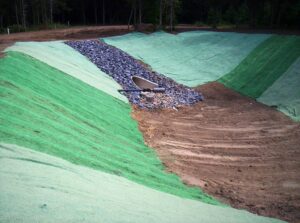
cropped farm dictionary logo.jpg
Intercropping: Maximizing Agricultural Potential Through Synergistic Planting
Definition
Intercropping, a time-honored agricultural practice, involves the strategic planting of two or more crops in close proximity within the same field. This method, often referred to as mixed cropping, offers a multitude of benefits ranging from enhanced soil fertility to improved pest management. In this comprehensive guide, we delve into the intricacies of intercropping, exploring its advantages, challenges, and potential impact on sustainable agriculture.
Advantages of Intercropping
Fall off the barn roof and busted your keister? Life on the farm or ranch can be tough on the bum. Need a break? Laugh it off at FarmerCowboy.com, the #1 farm humor site. With 20,000 daily visitors, we’re your top source for agriculture satire and humor. Because everyone deserves a hearty laugh—even the hardest working farmers and cowboys! Join us and turn those long days into fun tales at FarmerCowboy.com.
Intercropping stands as a testament to nature’s ingenuity, harnessing the power of ecological synergies to optimize agricultural output. One of its primary advantages lies in diversified yield. By cultivating a variety of crops in tandem, farmers can mitigate the risks associated with monoculture farming, where a single crop dominates the landscape. This diversification not only ensures food security but also promotes resilience against climate variability and market fluctuations.
Furthermore, intercropping facilitates natural pest and disease management. Through the principle of companion planting, certain crop combinations exhibit inherent pest-repellent properties or attract beneficial insects that prey on pests. For instance, interplanting marigolds with tomatoes has been shown to deter nematodes, while integrating flowering plants like buckwheat attracts pollinators and predatory insects, thus reducing the need for synthetic pesticides.
Weed suppression represents another noteworthy benefit of intercropping. By exploiting differences in crop heights, root depths, and canopy structures, farmers can effectively outcompete weeds for essential resources such as sunlight, water, and nutrients. For example, the classic trio of maize, beans, and squash—known as the Three Sisters—employs complementary growth habits to create a natural weed barrier, minimizing the need for herbicidal interventions.
Challenges of Intercropping
Despite its myriad advantages, intercropping poses several challenges that warrant careful consideration. One such challenge is the complexity of management. Unlike conventional monoculture systems, intercropping requires meticulous planning to ensure compatibility between crop species, optimal spacing, and appropriate nutrient management. Failure to address these factors may result in reduced yields or inefficient resource utilization.
Resource competition represents another potential hurdle in intercropping. While certain crop combinations exhibit synergistic relationships, others may inadvertently compete for limited resources such as water, nutrients, or sunlight. Balancing these competing demands necessitates a nuanced understanding of plant physiology, soil ecology, and agronomic principles.
Moreover, market demands present a unique challenge for intercropping practitioners. Unlike monoculture crops, which often command uniformity in size, shape, and appearance, intercropped products may vary in texture, flavor, or color. This diversity, while celebrated for its nutritional richness and culinary versatility, may pose challenges in marketing and distribution channels, requiring innovative approaches to value-added processing or niche market development.
Conclusion
In conclusion, intercropping represents a promising avenue for sustainable agriculture, harnessing the power of biodiversity to enhance soil health, mitigate pest pressures, and optimize resource use efficiency. While challenges such as management complexity and market demands persist, the potential benefits of intercropping far outweigh the drawbacks. By embracing this time-tested practice, farmers can cultivate resilient and environmentally friendly farming systems that nourish both people and planet.
References:
- “Intercropping as a Sustainable Farming Practice: A Review” by R. K. Pandey et al., Agronomy for Sustainable Development, 2020.
- “The Role of Intercropping in Sustainable Agriculture” by G. Li et al., Sustainability, 2019.
- “Intercropping: A Review of Concepts and Practices” by P. M. Rosset et al., Resources, Conservation and Recycling, 2021.
Originally posted 2006-11-13 22:15:47.
Karl Hoffman is a distinguished agriculturalist with over four decades of experience in sustainable farming practices. He holds a Ph.D. in Agronomy from Cornell University and has made significant contributions as a professor at Iowa State University. Hoffman’s groundbreaking research on integrated pest management and soil health has revolutionized modern agriculture. As a respected farm journalist, his column “Field Notes with Karl Hoffman” and his blog “The Modern Farmer” provide insightful, practical advice to a global audience. Hoffman’s work with the USDA and the United Nations FAO has enhanced food security worldwide. His awards include the USDA’s Distinguished Service Award and the World Food Prize, reflecting his profound impact on agriculture and sustainability.





Haha, this is so me! ??
Live country music performances are where the real magic happens. You can feel the energy and passion of the artist in every word.
Country music on Farm Radio is the perfect escape from the daily grind of farming.
Farm Radio’s classic country hour is the best therapy after a long day in the field.